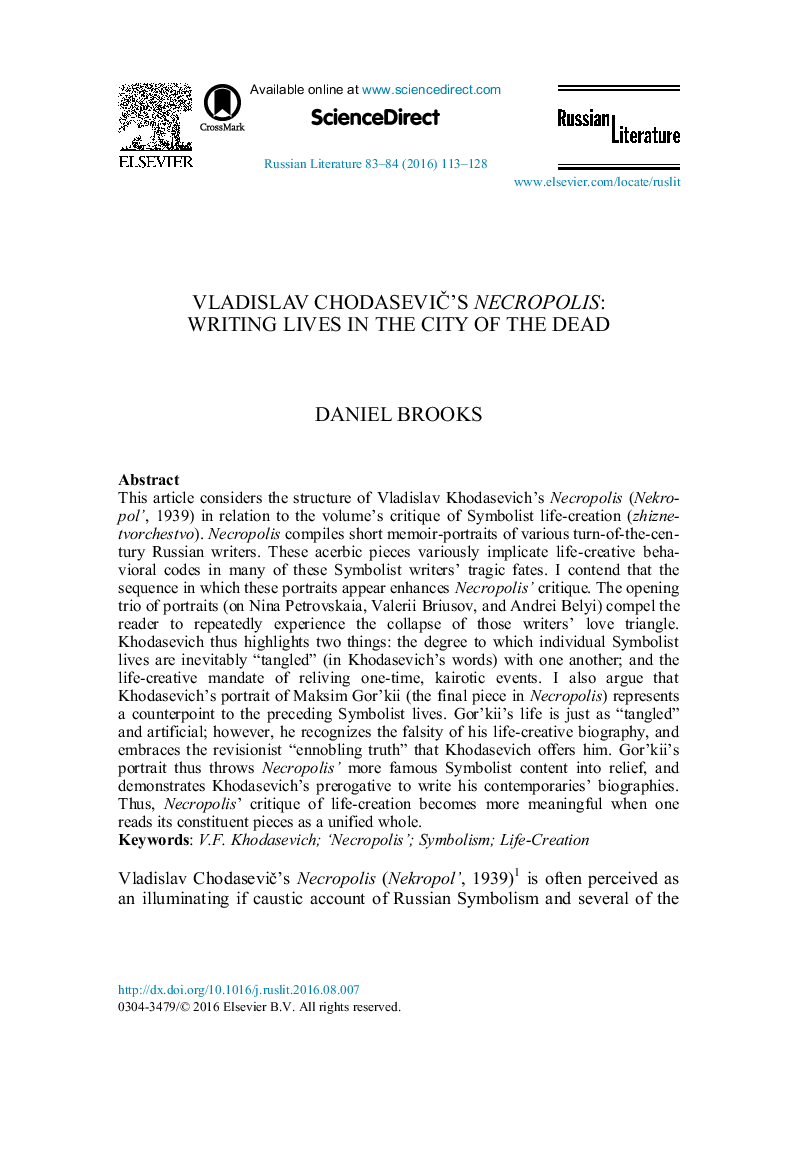| Article ID | Journal | Published Year | Pages | File Type |
|---|---|---|---|---|
| 1103743 | Russian Literature | 2016 | 16 Pages |
This article considers the structure of Vladislav Khodasevich's Necropolis (Nekropol', 1939) in relation to the volume's critique of Symbolist life-creation (zhiznetvorchestvo). Necropolis compiles short memoir-portraits of various turn-of-the-century Russian writers. These acerbic pieces variously implicate life-creative behavioral codes in many of these Symbolist writers' tragic fates. I contend that the sequence in which these portraits appear enhances Necropolis' critique. The opening trio of portraits (on Nina Petrovskaia, Valerii Briusov, and Andrei Belyi) compel the reader to repeatedly experience the collapse of those writers' love triangle. Khodasevich thus highlights two things: the degree to which individual Symbolist lives are inevitably “tangled” (in Khodasevich's words) with one another; and the life-creative mandate of reliving one-time, kairotic events. I also argue that Khodasevich's portrait of Maksim Gor'kii (the final piece in Necropolis) represents a counterpoint to the preceding Symbolist lives. Gor'kii's life is just as “tangled” and artificial; however, he recognizes the falsity of his life-creative biography, and embraces the revisionist “ennobling truth” that Khodasevich offers him. Gor'kii's portrait thus throws Necropolis' more famous Symbolist content into relief, and demonstrates Khodasevich's prerogative to write his contemporaries’ biographies. Thus, Necropolis' critique of life-creation becomes more meaningful when one reads its constituent pieces as a unified whole.
